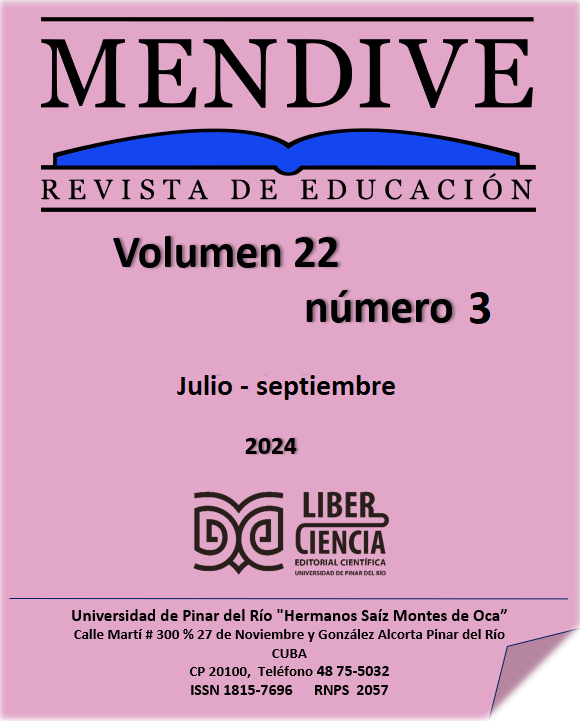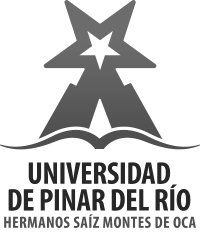Método del código alfabético de lectoescritura para segundo año de la Educación Básica de Ecuador
Contenido principal del artículo
Resumen
El método del código alfabético reviste gran importancia en el contexto de la Educación Básica Elemental, sobre la base del modelo constructivista. El objetivo del artículo fue socializar acerca de la pertinencia del método del código alfabético en el proceso de enseñanza-aprendizaje de la lectoescritura en segundo grado de la Educación Básica, utilizando una estrategia lúdica. La metodología empleada fue mixta, usando métodos teóricos, como el histórico-lógico, el inductivo-deductivo, la modelación y el enfoque de sistemas, empíricos y estadísticos, los cuales permitieron fundamentar la temática abordada y conocer el estado actual del proceso de lectoescritura en la población y muestra seleccionada. Se diseñó entonces una estrategia lúdica basada en el método del código alfabético, para la lectoescritura en el segundo grado de la institución educativa citada. Esta estrategia incluyó diversos recursos didácticos como el alfabeto móvil, propuesto por María Montessori y su implementación en la práctica educativa. La estrategia lúdica propuesta fue validada de forma teórica a través de la consulta de especialistas, demostrándose así la pertinencia de su introducción en la práctica educativa, con lo cual se comprobó que el método de código alfabético tributa al fortalecimiento y desarrollo de las destrezas, habilidades, capacidades, actitudes, aptitudes y competencias de los estudiantes en el área de la lectura y escritura.
Descargas
Detalles del artículo

Esta obra está bajo una licencia internacional Creative Commons Atribución-NoComercial 4.0.
Citas
Mena Andrade, S. (2019). Enseñanza del código alfabético desde la ruta fonológica. Revista Andina de Educación, 3(1), 2-7. https://doi.org/10.32719/26312816.2020.3.1.1
Ministerio de Educación del Ecuador. (2021). Currículo priorizado con énfasis en competencias comunicacionales, matemáticas, digitales y socioemocionales. Ministerio de Educación del Ecuador. https://educacion.gob.ec/wpcontent/uploads/downloads/2021/12/Curriculo-priorizado-con -enfasis-en-CC-CMCD-CS_Elemental.pdf
Payer, M. (2020). Teoría del constructivismo social de Lev Vygotsky en comparación con la teoría de Jean Piaget. Revista Scielo. 4(7), 1-4, https://www.proglocode.unam.mx/system/files/TEORIA%20DEL%20CONSTRUCTIVISMO%20SOCIAL%20DE%20LEV%20VYGOTSKY%20EN%20COMPARACI%C3%93N%20CON%20LA%20TEORIA%20JEAN%20PIAGET.pdf
Quintana Herrera, Y. (2019). Recursos didácticos para la comprensión de significados por los educandos con retraso mental en condiciones de inclusión. Revista Científico-Metodológica, 65. 1-8, https://www.redalyc.org/pdf/3606/360657469025.pdf
Rodríguez Palmero, M. L. (2011). La teoría del aprendizaje significativo: Una revisión aplicable a la escuela actual. Revista Electrònica d'Investigació i Innovació Educativa i Socioeducativa 3(1). 29-50. https://dialnet.unirioja.es/servlet/articulo?codigo=3634413
Vargas Murillo, G. (2017). Recursos educativos didácticos en el proceso enseñanza aprendizaje. Cuadernos Hospital de Clínicas, 58(1), 68-74. http://www.scielo.org.bo/scielo.php?script=sci_arttext&pid=S1652-67762017000100011
Yagual Cedeño, G. I. (2023). El Alfabeto Montessori en el Proceso de Lectoescritura de Niños de 5 A 6 Años. https://doi.org/doi.org/10.33386/593dp.2023.5.2012


